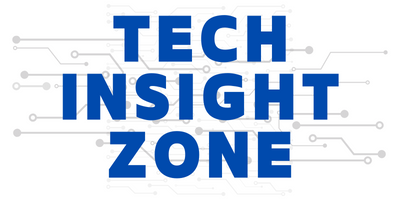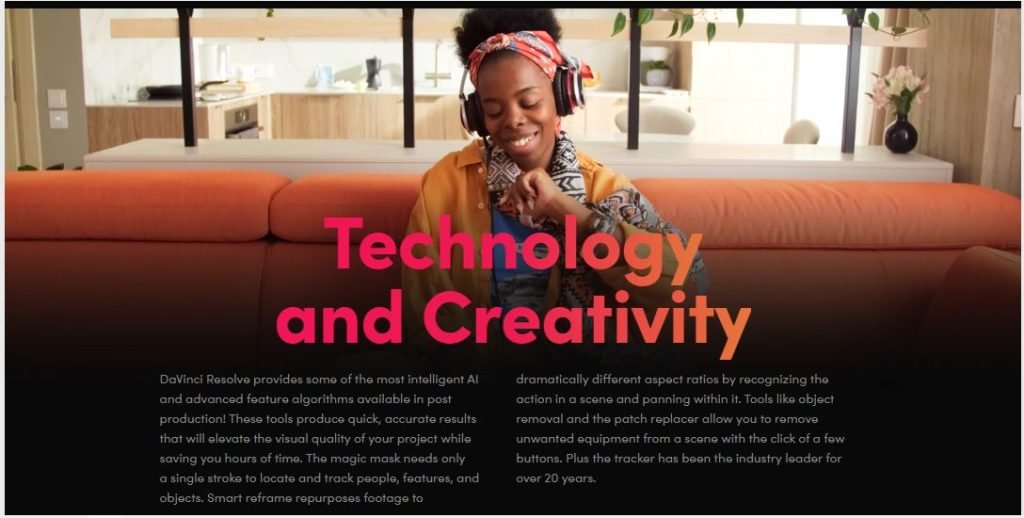The video editing landscape is undergoing a metamorphosis. Industry leaders Blackmagic Design and Adobe are embracing artificial intelligence (AI), promising to supercharge workflows and empower creators.
Let’s delve deeper into the exciting new features and explore how they might disrupt the entertainment industry.
1. DaVinci Resolve 19: AI Automates Repetitive Tasks
Blackmagic Design’s DaVinci Resolve 19 boasts two powerful AI features designed to streamline the video editing process:
a. IntelliTrack: The Smart Way to Track Objects and Add Motion Graphics
Imagine this: you have a fast-paced action scene with a moving subject. Traditionally, meticulously following that subject with keyframes would be a time-consuming task. IntelliTrack changes the game. This AI object tracker automatically analyzes your footage and tracks the movement of objects within the frame.
Need to keep a cyclist in focus as they weave through traffic? IntelliTrack handles it with ease. You can even use IntelliTrack for object tracking in motion graphics, allowing you to effortlessly create dynamic titles that seamlessly follow a car across the screen or have text orbit a product shot. This automation frees editors to focus on more creative aspects like color grading and sound design.
b. UltraNR: Unleash the Power of AI Noise Reduction
Grainy, noisy videos can be a nightmare for editors. Often, cleaning them up involves meticulous noise reduction tools that can be slow and tedious. UltraNR leverages AI to analyze your footage and remove unwanted noise from the source.
This AI noise reduction tool works wonders on low-light shots or archival recordings, delivering crisp and clear visuals in a fraction of the time traditional methods take. Imagine being able to salvage vintage footage or breathe new life into dimly lit scenes – all thanks to the power of AI.
2. Adobe Premiere Pro: The AI-powered Editing Studio of Tomorrow
Adobe isn’t holding back. They’re previewing groundbreaking AI features slated for future releases in Premiere Pro, offering a glimpse into what the editing suite of tomorrow might look like:
a. Generative Extend: Seamlessly Say Goodbye to Short Clips
A common editor’s dilemma is having a clip that’s just a few seconds short of the perfect edit. Traditionally, this might involve awkward cuts or resorting to B-roll footage. Generative Extend tackles this problem head-on.
This feature uses AI to seamlessly add frames to existing footage, allowing for perfect edits and smooth transitions. Need a few extra seconds to finesse a scene or ensure a character’s exit from the frame feels natural? Generative Extend has you covered. This eliminates the need for awkward cuts and opens doors for more precise storytelling.
b. Object Addition & Removal: Edit Like a Magician with AI-powered Content Manipulation
Imagine being able to remove unwanted elements from a scene, like a distracting boom mic in the background, or adding realistic objects like furniture or background details to enhance your story. With Object Addition & Removal, this becomes a reality. This feature leverages AI to analyze the scene and intelligently replace or add objects.
This opens doors for creative fixes – removing unwanted elements from a historical reenactment or adding a missing object to a product demonstration video. Object Addition & Removal also unlocks unique storytelling possibilities. Imagine replacing a boring background with a breathtaking vista or adding fantastical creatures to a scene – all within the familiar interface of Premiere Pro.
c. Text-to-Video: Generate Entirely New Footage Based on Your Vision
This might sound like something out of science fiction, but Premiere Pro’s upcoming Text-to-Video tool is poised to change the game. Imagine needing a quick establishing shot of a bustling cityscape or a establishing shot of a foreign country. Traditionally, you might need to resort to stock footage libraries. With Text-to-Video, you simply type in your vision and let AI do the legwork.
This feature uses AI to generate entirely new video footage based on text descriptions or reference images. This opens doors for storyboarding, concept creation, and even generating B-roll footage on the fly. Need a quick establishing shot of a jungle for your documentary? Text-to-Video can create it for you in seconds.
The Power Behind the Innovation: NVIDIA GPUs – The Unsung Hero
(A Demo of a 3D nature scene by Rakesh Kumar Using NVIDIA GPU)
While these AI features sound futuristic, they rely on robust processing power to function smoothly. This is where NVIDIA steps in. Their graphics cards (GPUs) act as the muscle behind the AI, allowing DaVinci Resolve and Premiere Pro to run these features efficiently.
Essentially, NVIDIA GPUs provide the high-performance engine powering your editing software. Without the processing power of these GPUs, the real-time functionality and seamless integration of these AI features wouldn’t be possible.
The Future of Video Editing: Democratization and Disruption
The integration of AI signifies a major turning point in video editing. Here’s why it’s special:
Democratization of Video Editing: AI-powered tools have the potential to make video editing more accessible than ever before. Repetitive tasks become automated, freeing up editors to focus on creativity. This could empower new creators and lead to a surge of high-quality content.
Disruption of the Entertainment Industry: The ease and speed of AI-powered editing could revolutionize the entertainment industry. We might see a rise of independent creators with unique voices and perspectives. The barrier to entry for high-quality video production could significantly decrease.
AI is still in its early stages, but its impact on video editing is undeniable. As AI continues to evolve, we can expect even more groundbreaking features that push the creative boundaries. The future of video editing is bright, and it’s fueled by the power of AI. Buckle up, editors, because we’re in for an exciting ride!
Meanwhile, amidst the backdrop of technological advancement, Intel’s global expansion aims to address the pressing chip shortage, ensuring a seamless supply chain for the industry’s innovative endeavors. Explore how these interconnected developments are shaping the future of content creation and technology.





